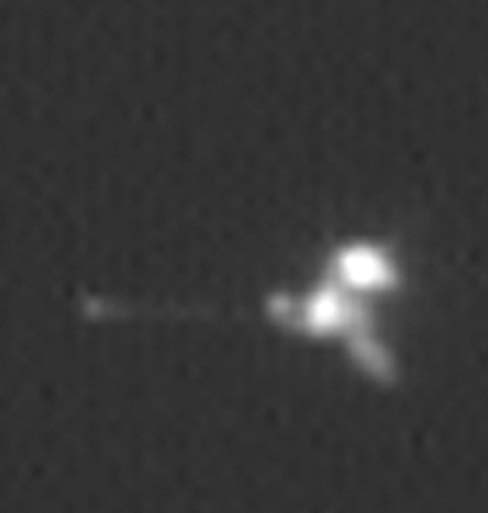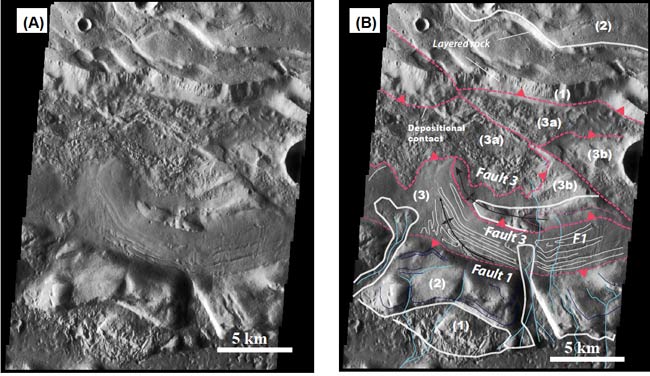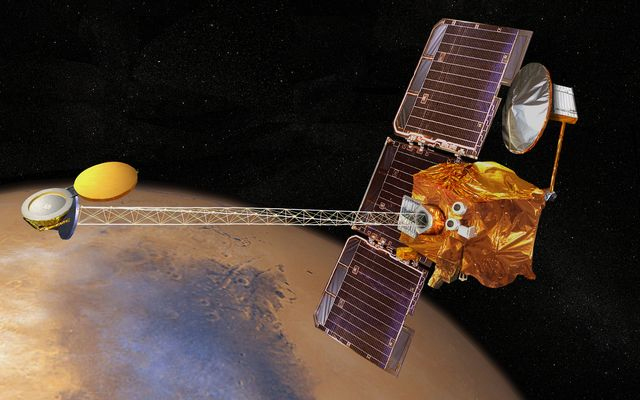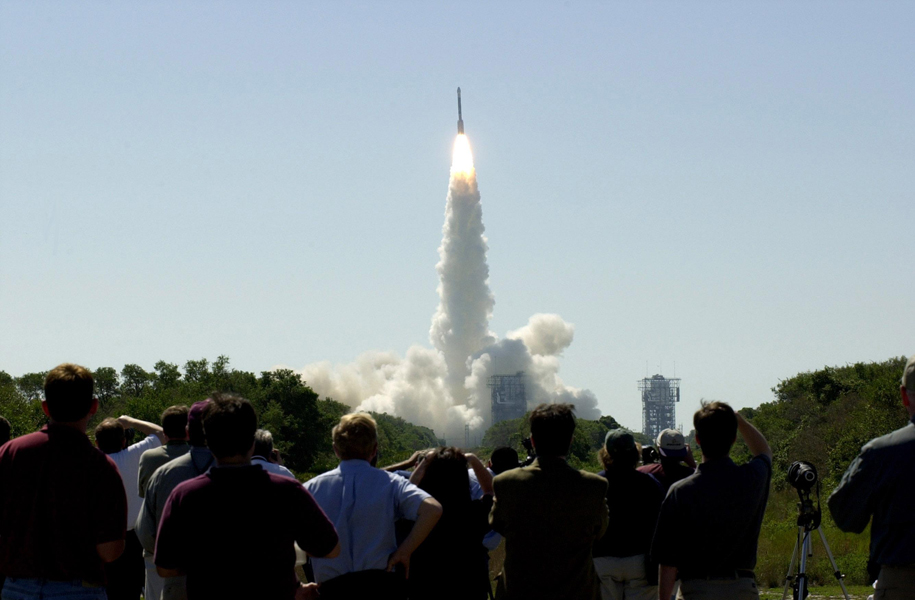Mars Odyssey: Pictures from Longest Mars Mission
New Photos Are First of Spacecraft Orbiting Mars
This image is an enlargement of a photograph of the Mars Odyssey probe taken by NASA's Mars Global Surveyor probe while the two spacecraft were 56 miles (90 kilometers) apart.
Dunes in Lohse Crater
he THEMIS instrument on Mars Odyssey spacecraft captured this image of dunes in Lohse Crater on September 4, 2011. In December 2010, Odyssey became the longest-serving spacecraft at Mars.
Recent Tectonic Activity on Mars?
Landforms north of Mars' Olympus Mons volcano may be evidence of recent tectonic activity. Left: uninterpreted image, from NASA's Mars Odyssey spacecraft. Right: interpreted image.
7th-Graders Discover Mysterious Cave on Mars
California 7th graders discovered this Martian pit feature at the center of the superimposed red square in this image while participating in a program that enables students to use the camera on NASA's Mars Odyssey orbiter. The feature, on the slope of an equatorial volcano named Pavonis Mons, appears to be a skylight in an underground lava tube. Full Story.
Possible New Mars Caves Targets in Search for Life
A THEMIS image from the Mars Odyssey spacecraft showing entrances to possible Martian caves, dubbed the "seven sisters." Clockwise from upper-left: Dena, Chloe, Wendy, Annie, Abbey, Nikki and Jeanne. Arrows signify direction of solar illumination (I) and direction of North (N).
Mars Odyssey Spacecraft
An artist's rendering shows the Mars Odyssey spacecraft.
Coprates Chasma on Mars
Morning clouds fill Coprates Chasma on Mars in this Nov. 25, 2015, image from the THEMIS camera on NASA's Mars Odyssey. No orbiter systematically observed Mars in morning sunlight before 2015. The clouds appear blue because ice particles in them scatter blue light more strongly than other colors.
Breaking space news, the latest updates on rocket launches, skywatching events and more!
Boeing Delta II Rocket Lift Off in 2001
At 11:02 a.m. EDT on April 7, 2001, crowds watch a Boeing Delta II rocket lift off from Cape Canaveral Air Force Station, Florida, carrying NASA's 2001 Mars Odyssey spacecraft into space on its seven-month journey to Mars.

Space.com is the premier source of space exploration, innovation and astronomy news, chronicling (and celebrating) humanity's ongoing expansion across the final frontier. Originally founded in 1999, Space.com is, and always has been, the passion of writers and editors who are space fans and also trained journalists. Our current news team consists of Editor-in-Chief Tariq Malik; Editor Hanneke Weitering, Senior Space Writer Mike Wall; Senior Writer Meghan Bartels; Senior Writer Chelsea Gohd, Senior Writer Tereza Pultarova and Staff Writer Alexander Cox, focusing on e-commerce. Senior Producer Steve Spaleta oversees our space videos, with Diana Whitcroft as our Social Media Editor.








